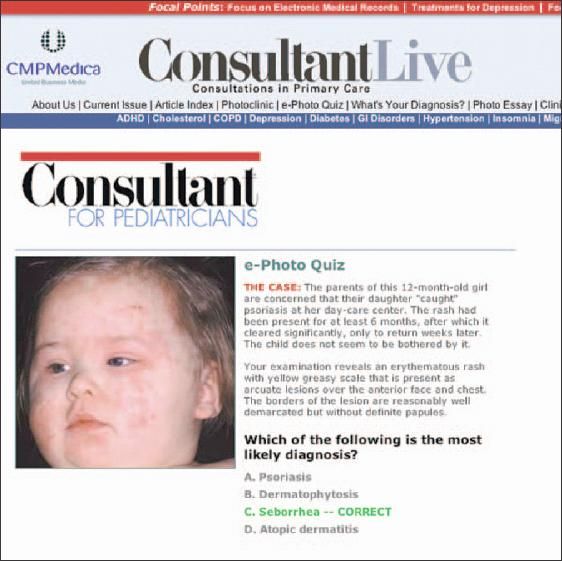Answer to Last Month’s Online Challenge
Infantile seborrhea has many of the features of the other papulosquamous conditions listed, but the diagnosis is most commonly clinically evident on examination alone. If you are unsure, a KOH preparation will quickly sort out the dermatophytes. Also, the lack of itch makes atopic dermatitis very unlikely.

Figure
DISCUSSION: Option C, Seborrhea, is the correct answer.
Infantile seborrhea has many of the features of the other papulosquamous conditions listed, but the diagnosis is most commonly clinically evident on examination alone. If you are unsure, a KOH preparation will quickly sort out the dermatophytes. Also, the lack of itch makes atopic dermatitis very unlikely.
The difficulty arises in excluding psoriasis. Many consultants consider that there is significant overlap between seborrhea and psoriasis because many children with seborrhea also have features of psoriasis. I like to reserve my final thoughts; I am not comfortable excluding psoriasis until I have seen a rapid response to therapy, and until I see that this response continues if the condition recurs.
Pityrosporum ovale-yeast commonly found as part of the skin's normal microflora-is the most likely cause of this condition. There are a number of immunologic and biochemical theories to explain individual susceptibility or causation but, for the clinician, the often rapid and complete response to topical azoles is strong evidence that this organism plays a significant role in the etiology.
Newsletter
Access practical, evidence-based guidance to support better care for our youngest patients. Join our email list for the latest clinical updates.